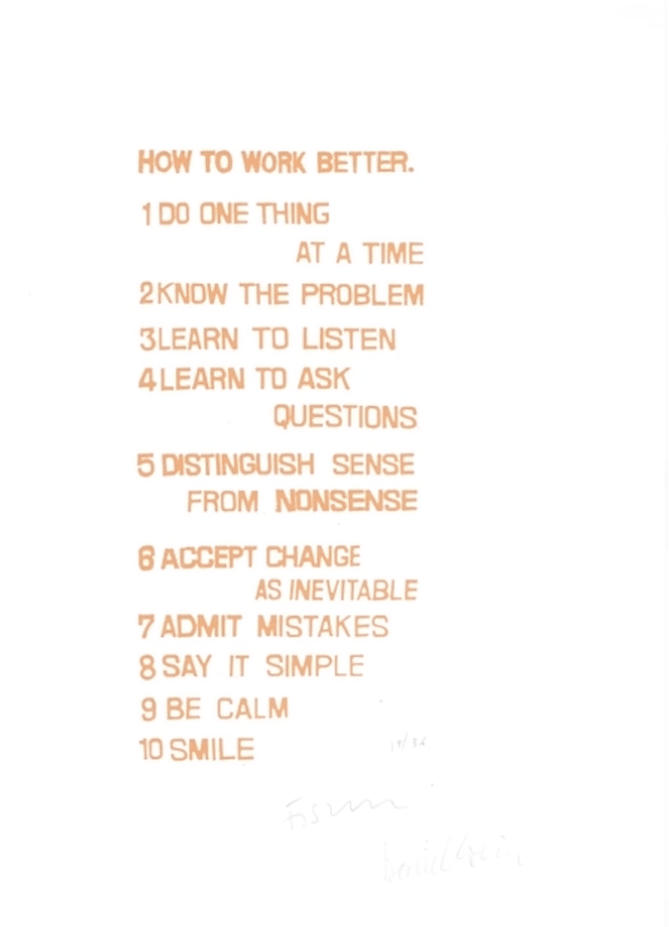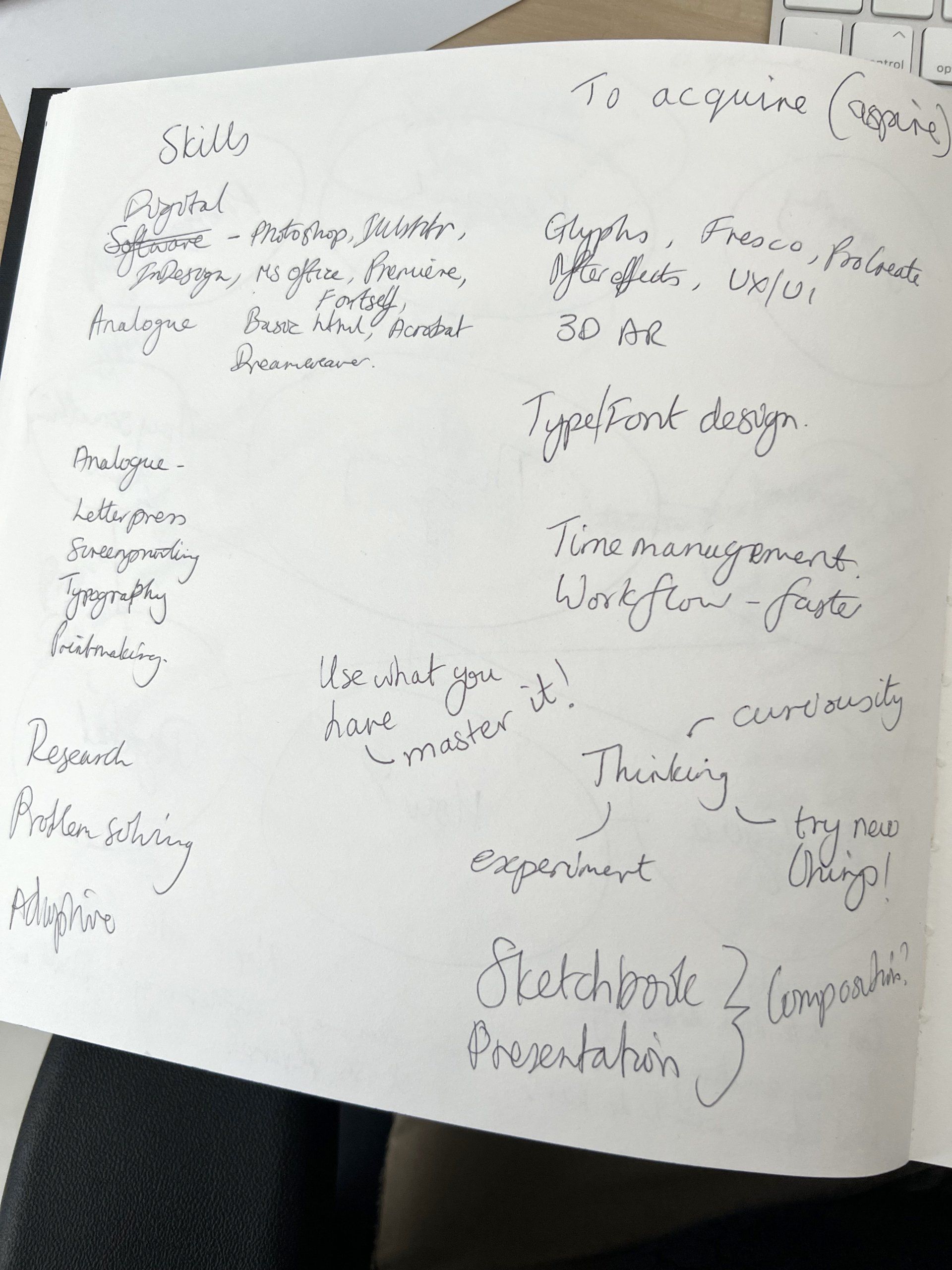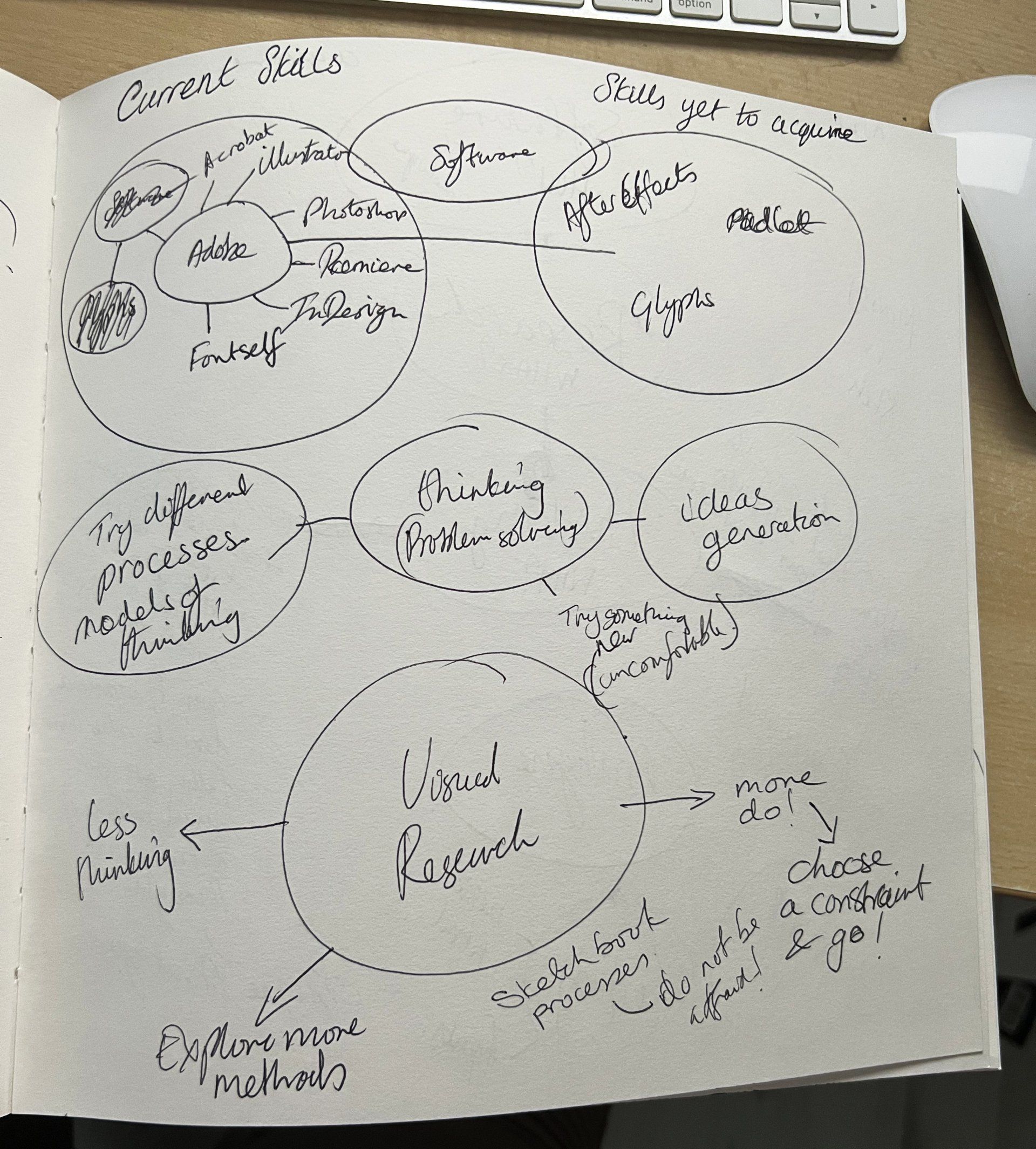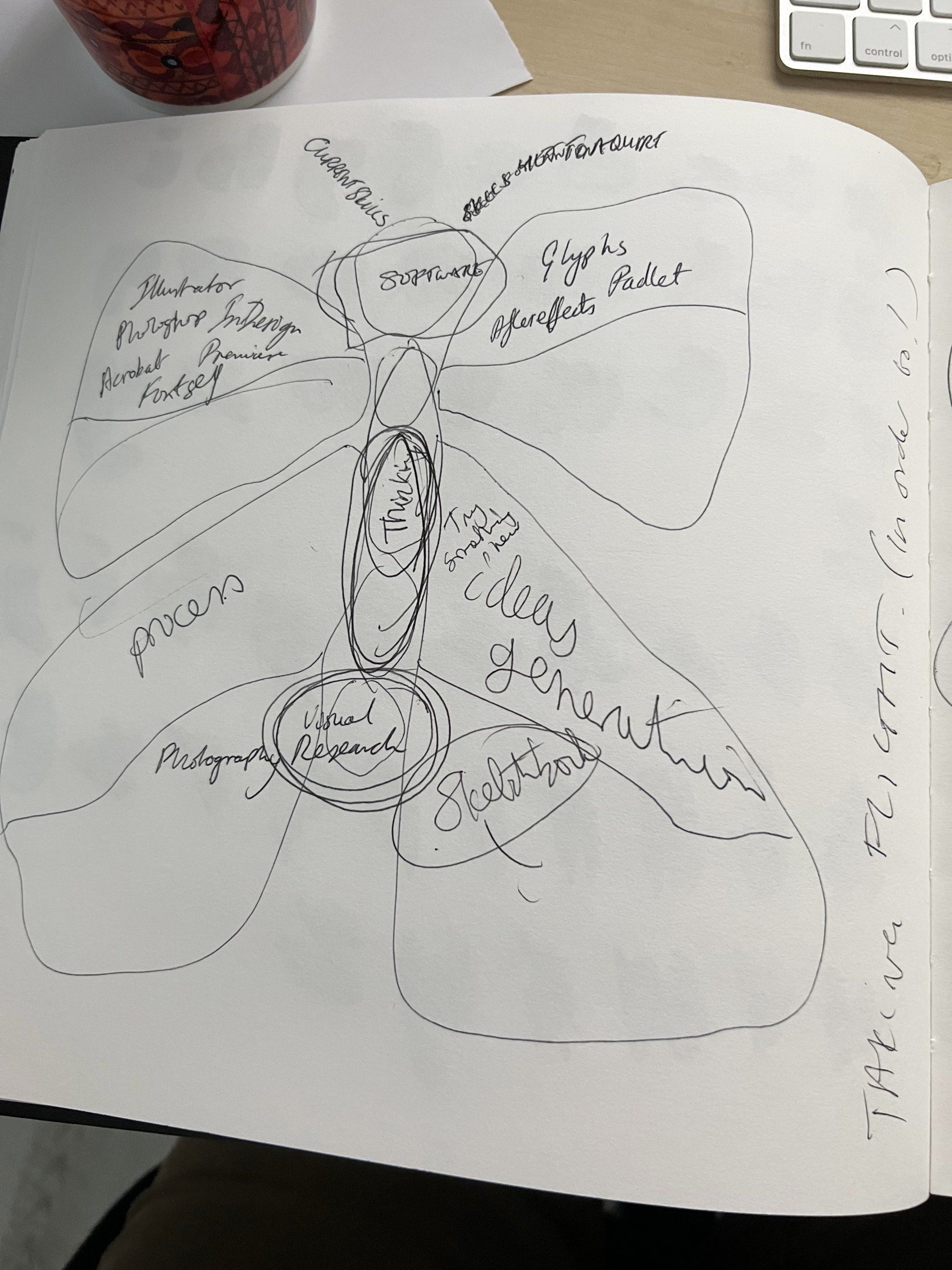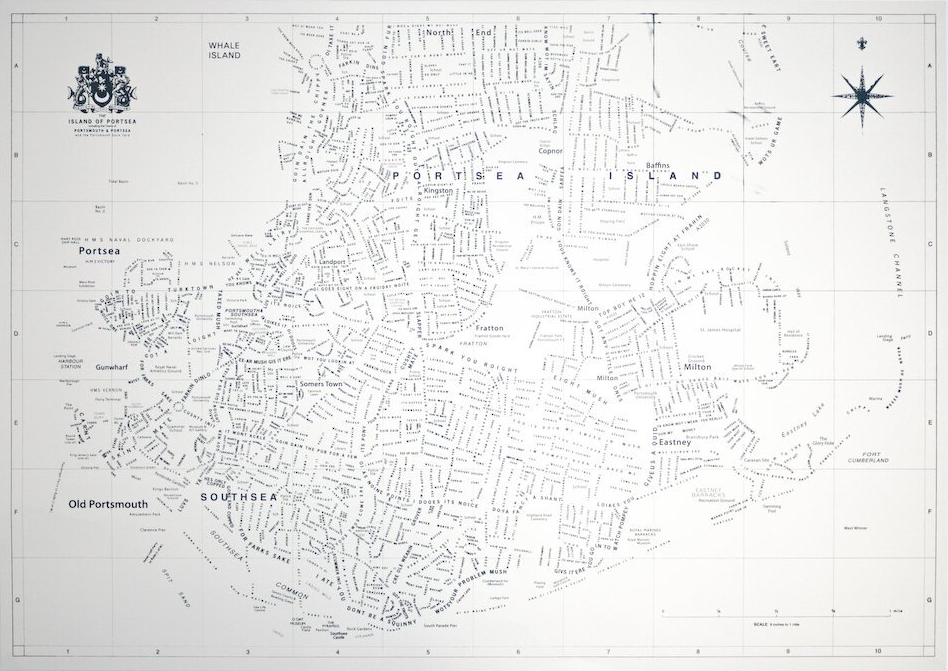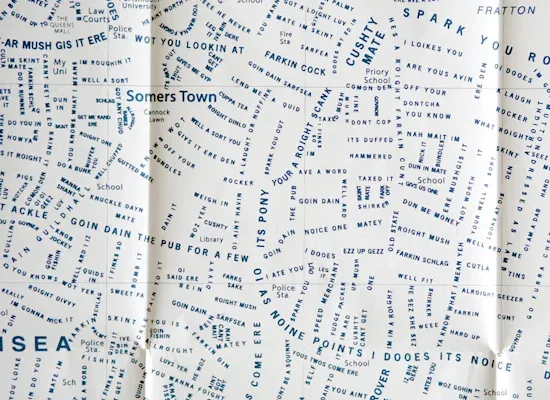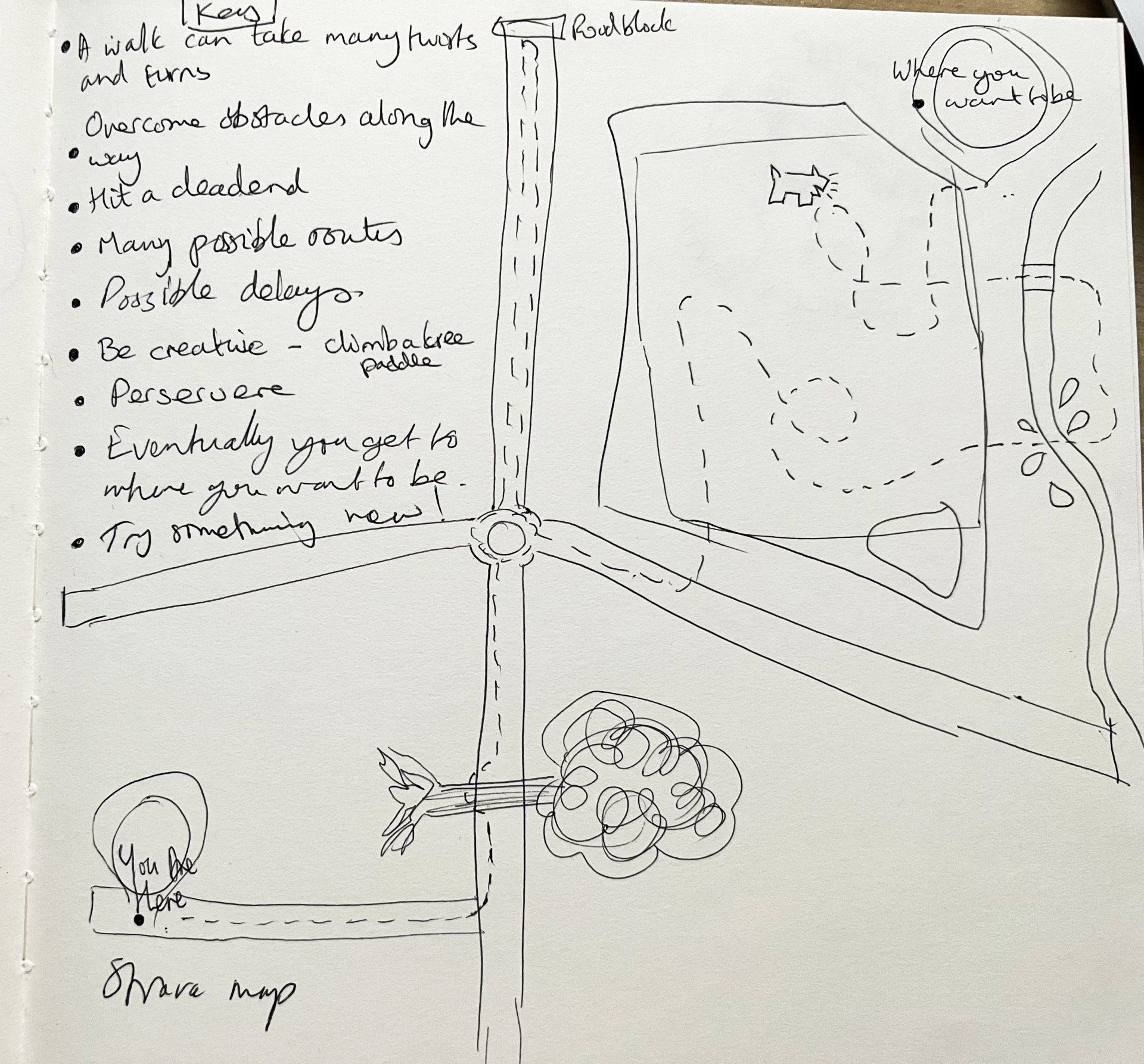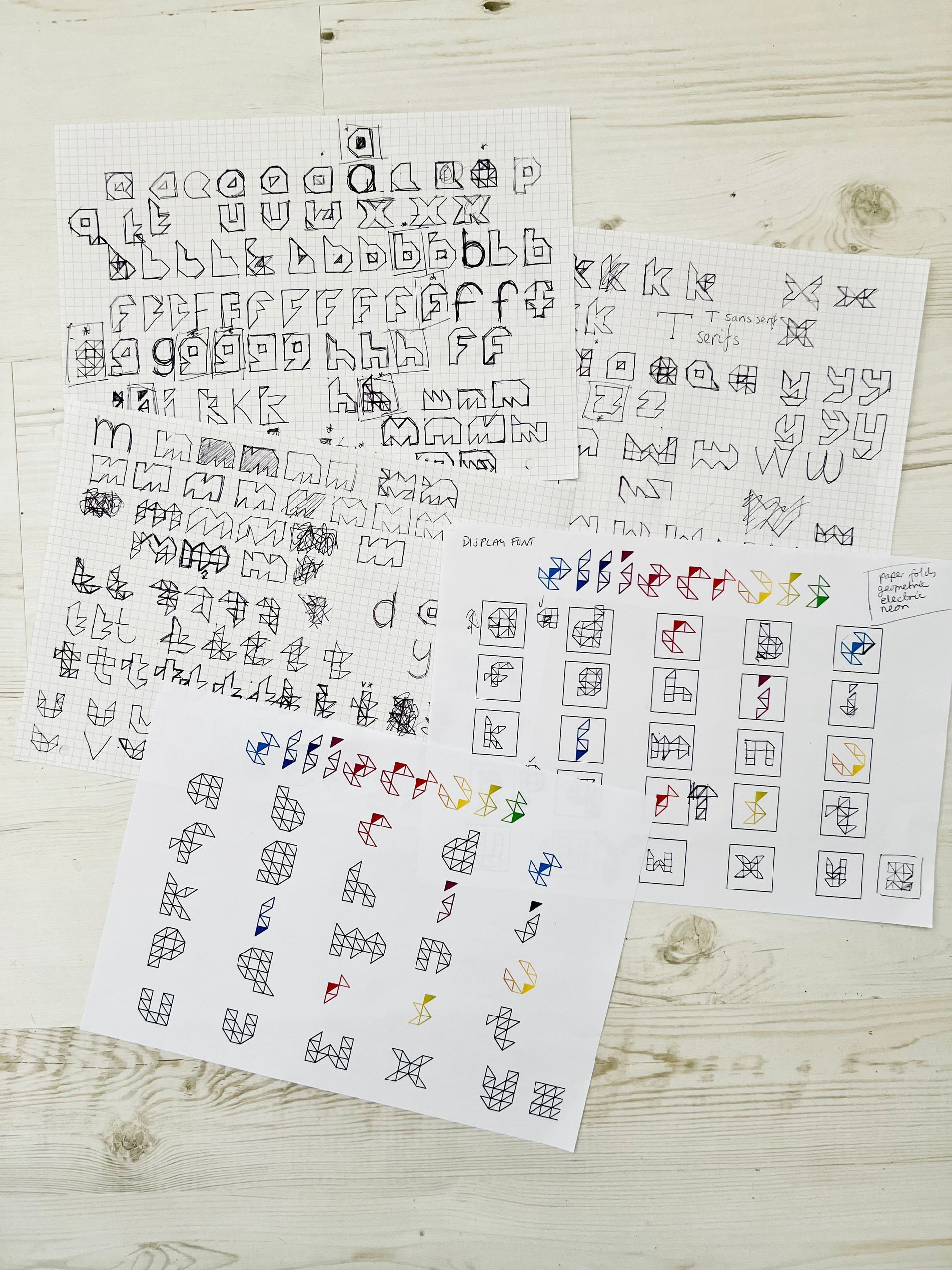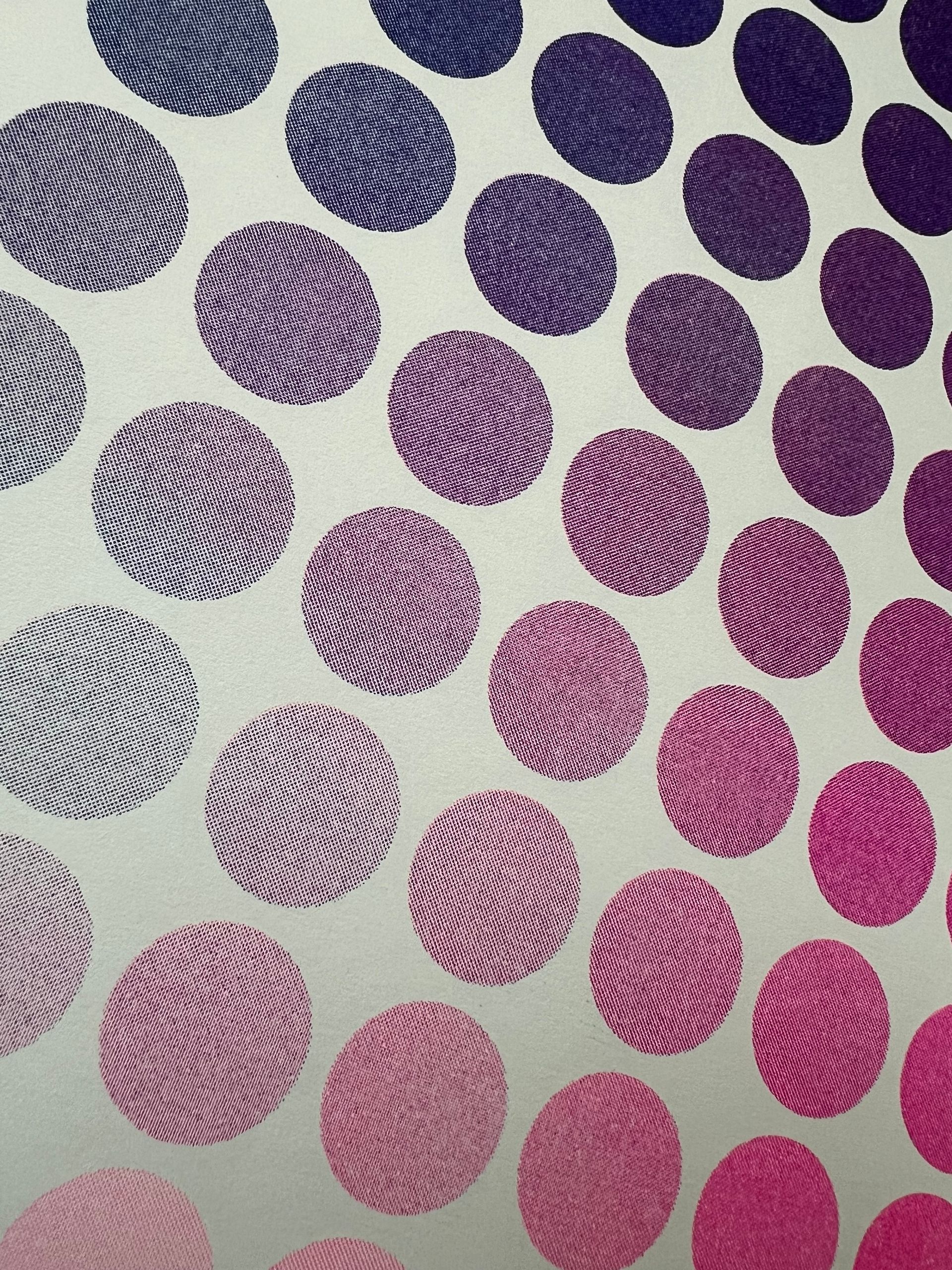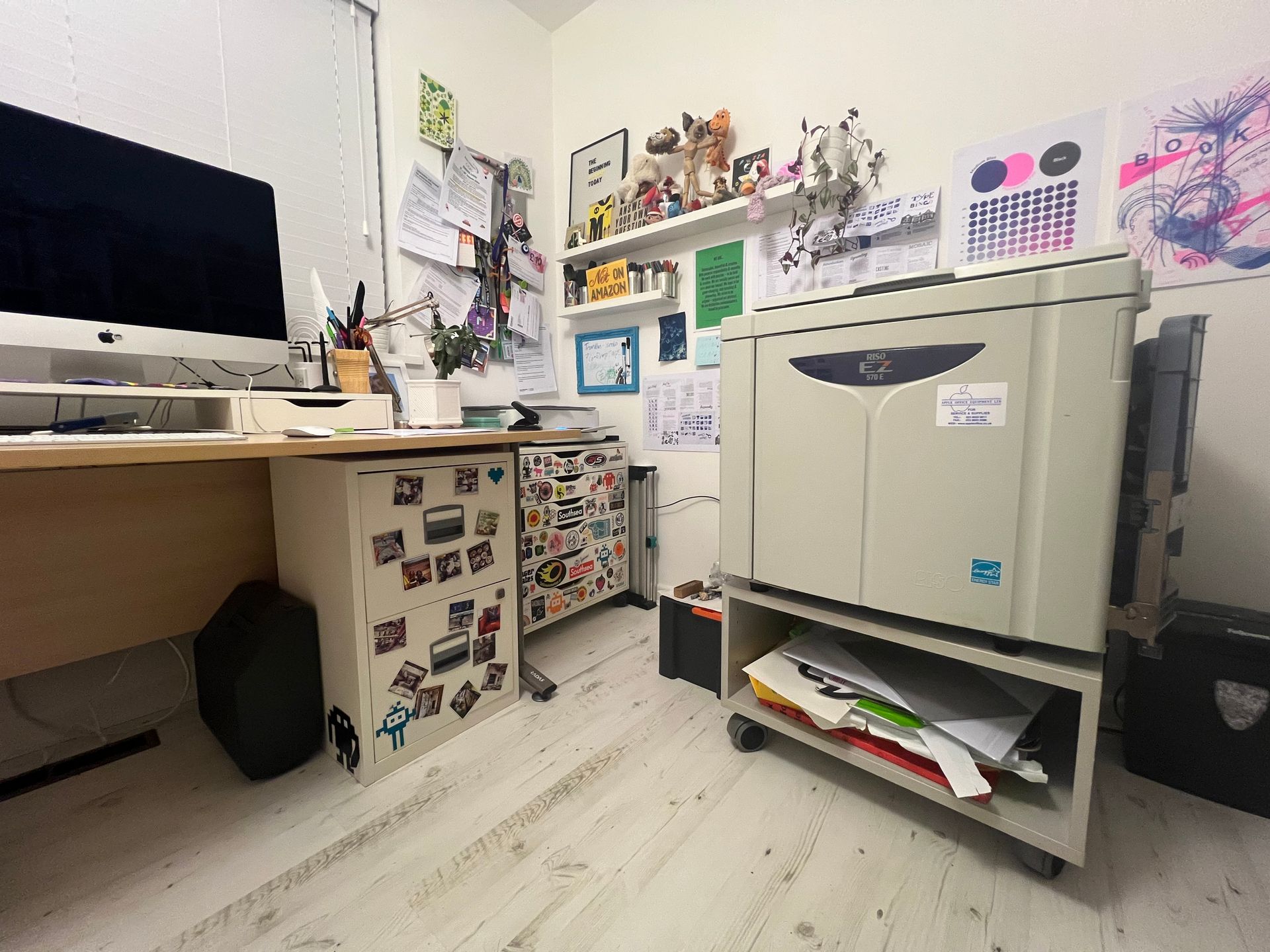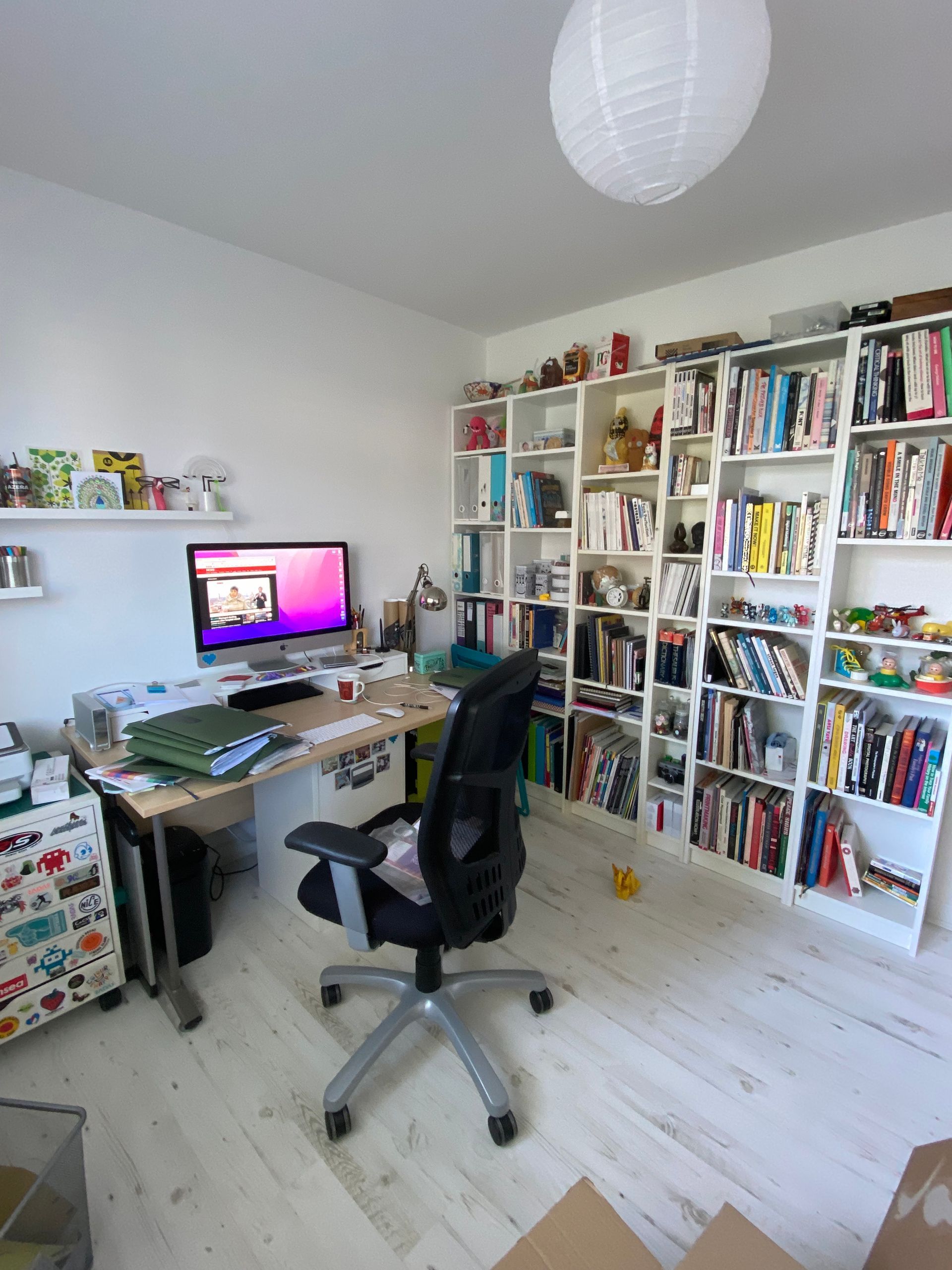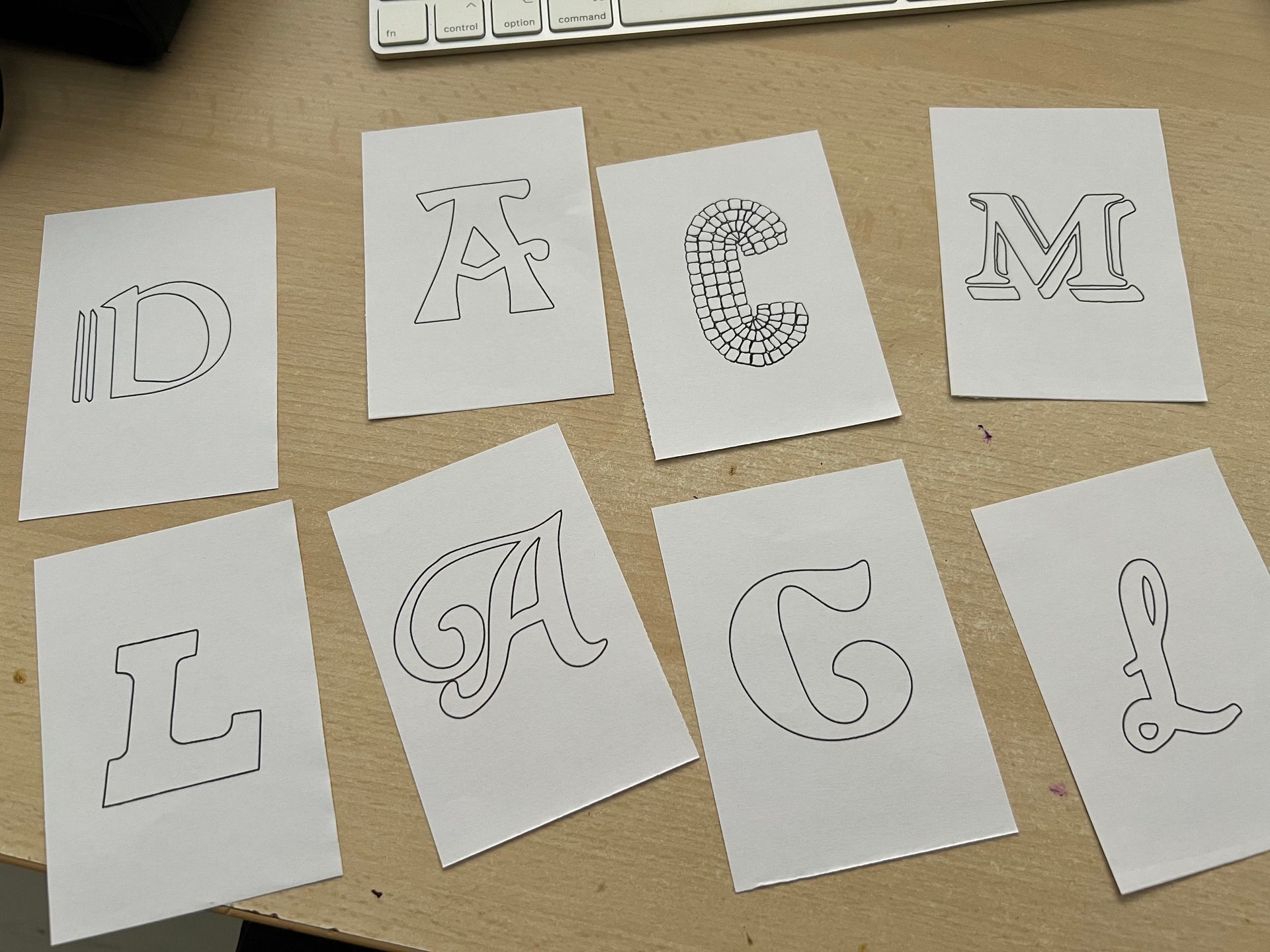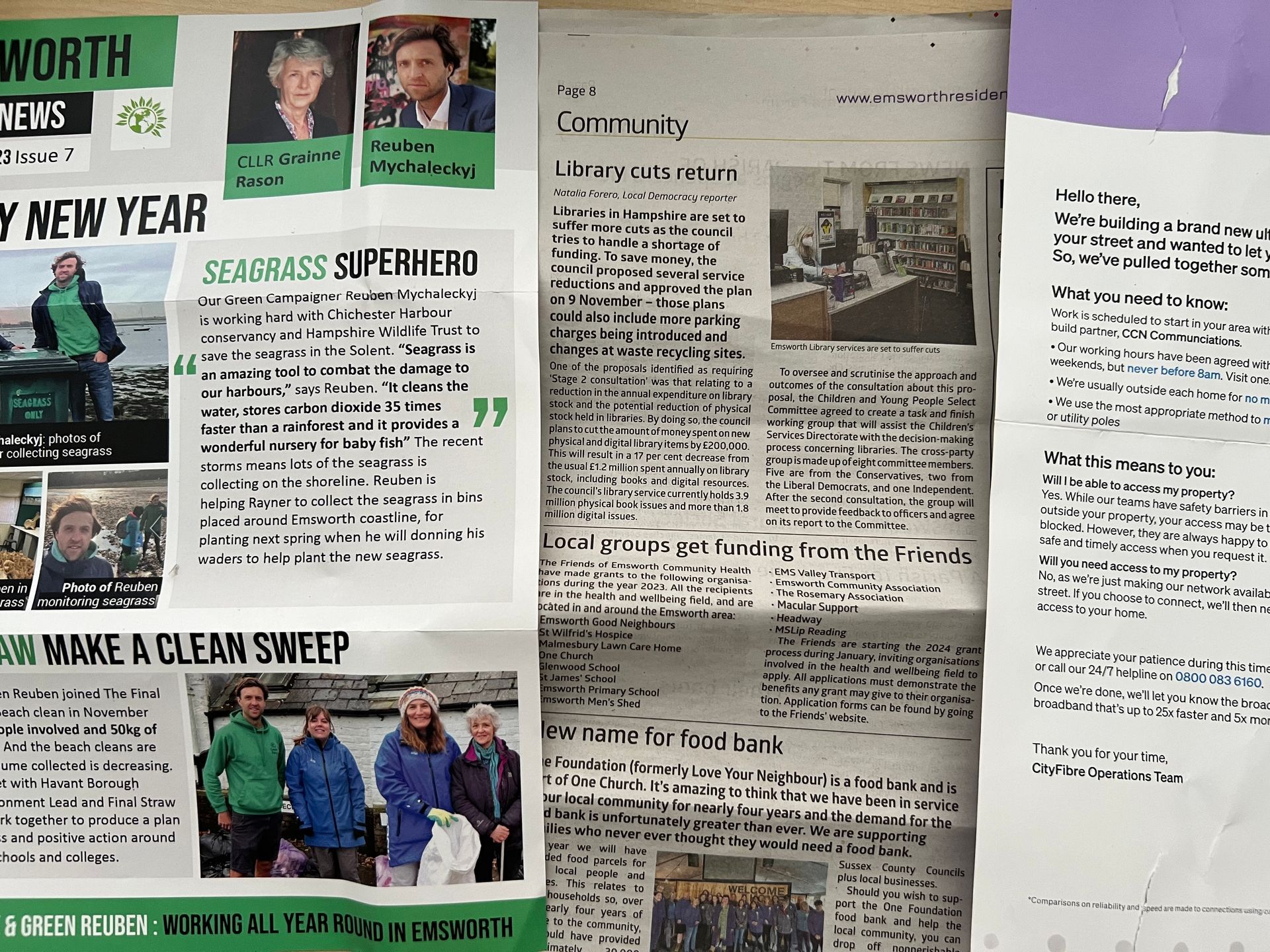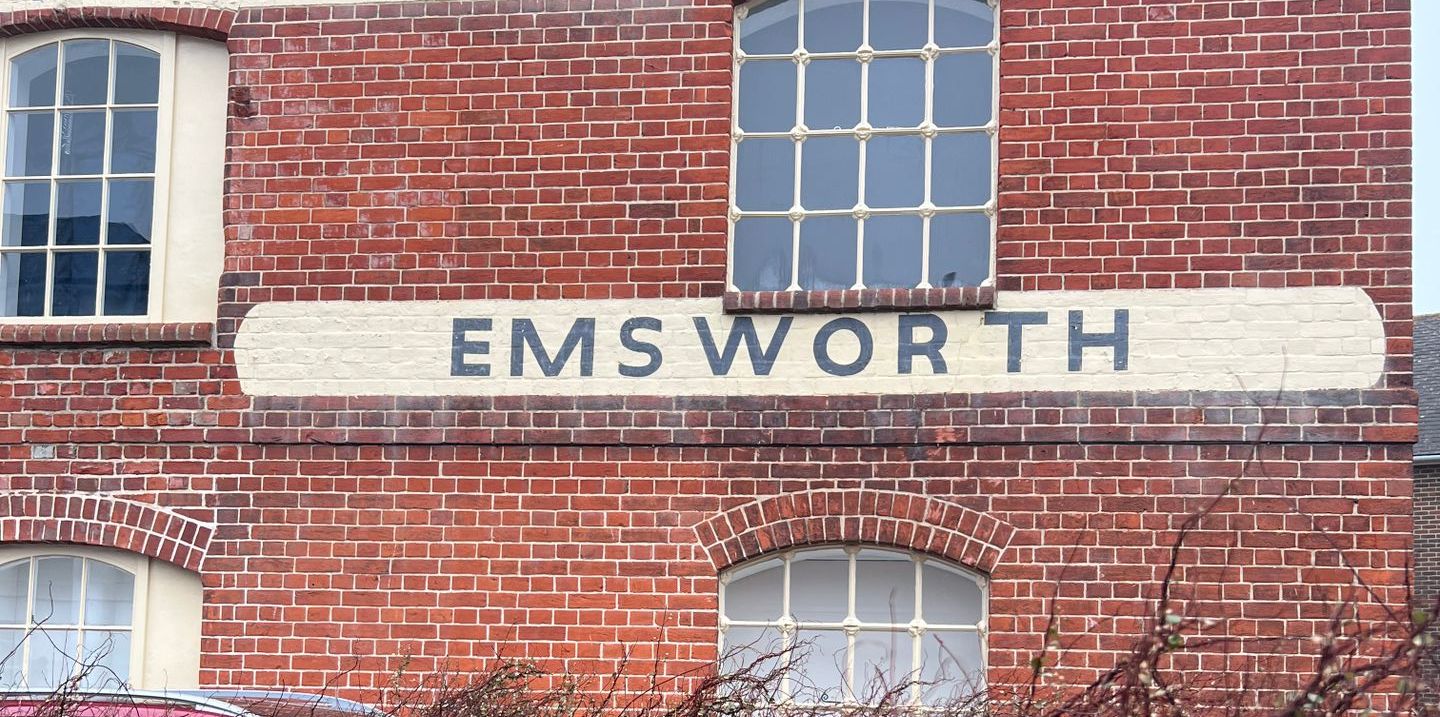Personal Reflection on Skills Development and New Process Model Outcome
This week’s lecture, Filling the Gaps, is a series of talking heads case studies, asking a variety of practitioners the following questions:
"What would you like to be doing that you are not doing in your work?"
Simon Manchip – Has no time for anything else. Enjoys the variety of challenges that come with running a agency. Projects stretch him in so many different directions he finds compelling and he really enjoys going to work. Different mind sets needed for different projects, adapting your mindset for different clients. If he wasn’t doing what he does he’d be looking for something transformative, strategic for the future and would want to make things that are interesting. World of work often automated. Law can be automated as you required to remember lots of things which computers are good at. Where as humans are really good at original thought and lateral thinking. Not so easy to be replaced by a machine.
Sam Winston – Can’t imagine not doing what he does, maker/artist. Would become a hermit and live in the woods and watch trees growing.
Regular practice – Create things or make notes of them as they happen and often sometime in the future they remember it because it now fits with a brief. So, they end up working with things they like because they kind of make it happen. Do not have any burning desires as they try to do the work they want to do anyway.
Sarah Boris – Likes to test materials rather than just paper and a screen. Would like to do more for the home like rugs and tableware. Maybe collaborate with some product designers. Learns a lot from people from different backgrounds.
Intro – Get outdoors more. Most of the time complaining about things around them, clients, their work, their daily routine. Thoroughly enjoy it as a way of making a living and would recommend it. The nature of their work keeps them happy. Enjoyable projects but clients get on their nerves more. Talbot type venture a salvation as he had started to need another challenge. Happened by accident. Personal projects can relieve the pressure of intense work projects.
"How important are side projects and are you currently working on any?"
Simon Manchipp – He had side projects while he worked for others and made a bit of extra money. Too busy for side projects now but is working on his own products rather than just being a service. This includes software and digital platforms. Discovering things from outside of just being a service.
Sam Winston – He has made a living out of side projects. Always have to find something that isn’t work. He found literature and books which encroached into his work. Gets lots from solitude, trusting space to find answers rather than filling the space to get answers. I’m going to do nothing but as a human we can't do that and in turn come up for 50 ideas while actively trying not to think about anything.
Regular Practice – intrigued by authorship and what to do. You get to define a side project 100% rather than their studio work. Need to carve the time and actively do it or it may never materialise.
Sarah Boris – side projects always been her bread of her practice. To do list of side projects and often sits with the list for a few years and then if she still values the idea she’ll start doing some. Side projects important for practice as they define her as a designer. Side projects are purely you without any influence from a client. Side projects land more work as they say more about herself than a typical portfolio.
Intro – Julian House, “Making music was the first part of it because he wanted to make music and collected records, into weird electronic records and then he and a friend with similar interests realised they could create a little label. It was a fortunate time around 2004 when they could share their music with the world via the web but without the world stealing it from them. Sell more vinyl than CDs. It wasn’t just about making the music it is all the associated design that goes with it, packaging, film, events etc. This creative outlet is important because you don’t really know where it is going to go and it evolves out and becomes its own thing. You have complete ownership which is important as you have created, owned and released something into the world. Overall a Sense of owning that world that you have created. Idea of creating things and putting them out there and those being your things. Feeds back into client work. Side lines offer relief and feeds back into your day job. Adrian talbot “side lines pick him up again.” Side lines can lead to learning new skills, as you are doing it you are learning how. He’d always thought it must be quite easy to design a font but has discovered it isn’t. there’s no such thing as a mathematical designed typeface, it is a highly visual process, even the most geometric typefaces they are full of inconsistencies. Still on a learning curve and on versions 6th 8th versions of earlier fonts which sell well so must be getting something right. He continues to create new fonts every time he feels compelled, retreating into a world you wholly own. No one can tell him what to do and when to do it and how to do it he has complete ownership. If they weren’t selling fonts and music it would be a completely futile exercise. It validates what they are doing and what they have done. If you have a side project it needs to have some criteria to meet in the end. So if you make a film you need to have people show up to watch it or arrange with a gallery to show it. You need something to validate it or you’re working in a vacuum of just designers speaking to each other.
Over the years I have completed small jobs for friends which has brought about other work. Chance encounters with random strangers in the street has too brought in new work. I always have a list of side projects but rarely have the time to execute them. Working for a studio I realised the importance of side projects to relieve the tension from rigid commercial work projects. Even now it is something I feel is beneficial and there are many gains by factoring some time in, even to push learning a new skill or gain new work through doing something that you love.
Resources & Other References
- Brian Eno (2017, April 5). How to Beat Creative Block. Available at Brian Eno: How To Beat Creative Block - BBC Click.
- Brian Eno (2021, April 8). Brian Eno's Oblique Strategies. Available at Bloombergs.
- The School of Life (2017, September 21). The Importance of Vulnerability Available at The Importance of Vulnerability.
- The School of Life (2015, March 23). Keep Going. Available at Keep Going.
- Brian Eno, Oblique Strategies (last ed, 2018), [Accessed 16 January 2019] Available from https://en.wikipedia.org/wiki/Oblique_Strategies
- Klanten, R. (2009). Data Flow: Visualising Information in Graphic Design. Gestalten, Berlin.
Read | Watch | Listen
Creative block can hinder us at any stage or we can get stuck in a rut especially when working alone, using the same methods and techniques to create the same outcomes becoming more and more stagnant in our creative process and practices, often becoming bored along the way. Therefore, it is important to have strategies to combat these if our work is to have any longevity.
‘Visual metaphors are a powerful aid to human thinking. From Sanskrit through hieroglyphics to the modern alphabet, we have used ciphers, objects, and illustrations to share meaning with other people, thus enabling collective and collaborative thought. As our experience of the world has become more complex and nuanced, the demands to our thinking aids have increased proportionally. Diagrams, data graphics, and visual confections have become the language we resort to in this abstract and complex world. They help us understand, create, and completely experience reality.’ Alan Woo, Super Ordinary (Klanten, 2009).
Watching Brian Eno's, 'How to Beat Creative Block', he discusses how he and friend, Peter Schmidt, developed their card deck, Oblique Strategies, as a tool to get over some of our annoying human traits to aid their work.
Eno had the idea when working in the music studio under pressure on a small budget, where you can forget all your best ideas. Panicking about how much time you have can push all other ideas aside. You’re not really paying attention to what is going on (Eno, 2017).
The first oblique strategy Eno wrote was ‘honour thine error, as a hidden intention’, just to remind himself if something goes wrong don’t immediately chuck it out, just for a moment give it a listen and see if there’s something interesting about it (Eno, 2017).
Another example, ‘Discover the recipes you are using and abandon them’, as humans we can do this but as Eno says a ‘computer would discover them and keep using them again and again’, we do not have to and we can generate new ideas by using strategies to stimulate new ones (Eno, 2017).
From this he wrote a dozen or so more and had a list, but the list didn’t work so well because you tend to just take the one that is most convenient, the one that lets you carry on exactly what you are already doing, so decided they should be on cards to avoid this (Eno, 2017).
‘What would your closest friend do?’ this one takes you out of your own head and look at something from another perspective. It is like when you play a piece of music or show a piece of work and you immediately become critical of it, as you are seeing it or listening to it as they are (Eno, 2017).
The cards are not restricted to making music and have also be used as aids in many other situations and disciplines. Although, Eno felt very uncomfortable after finding out one individuals occupation. He'd been chatting to someone at a dinner party who had recognised him as the creator of, oblique strategies and professed to using them himself. When Eno asked his occupation, neurosurgeon, he swiftly asked that he not use them anymore (Eno, 2021)!
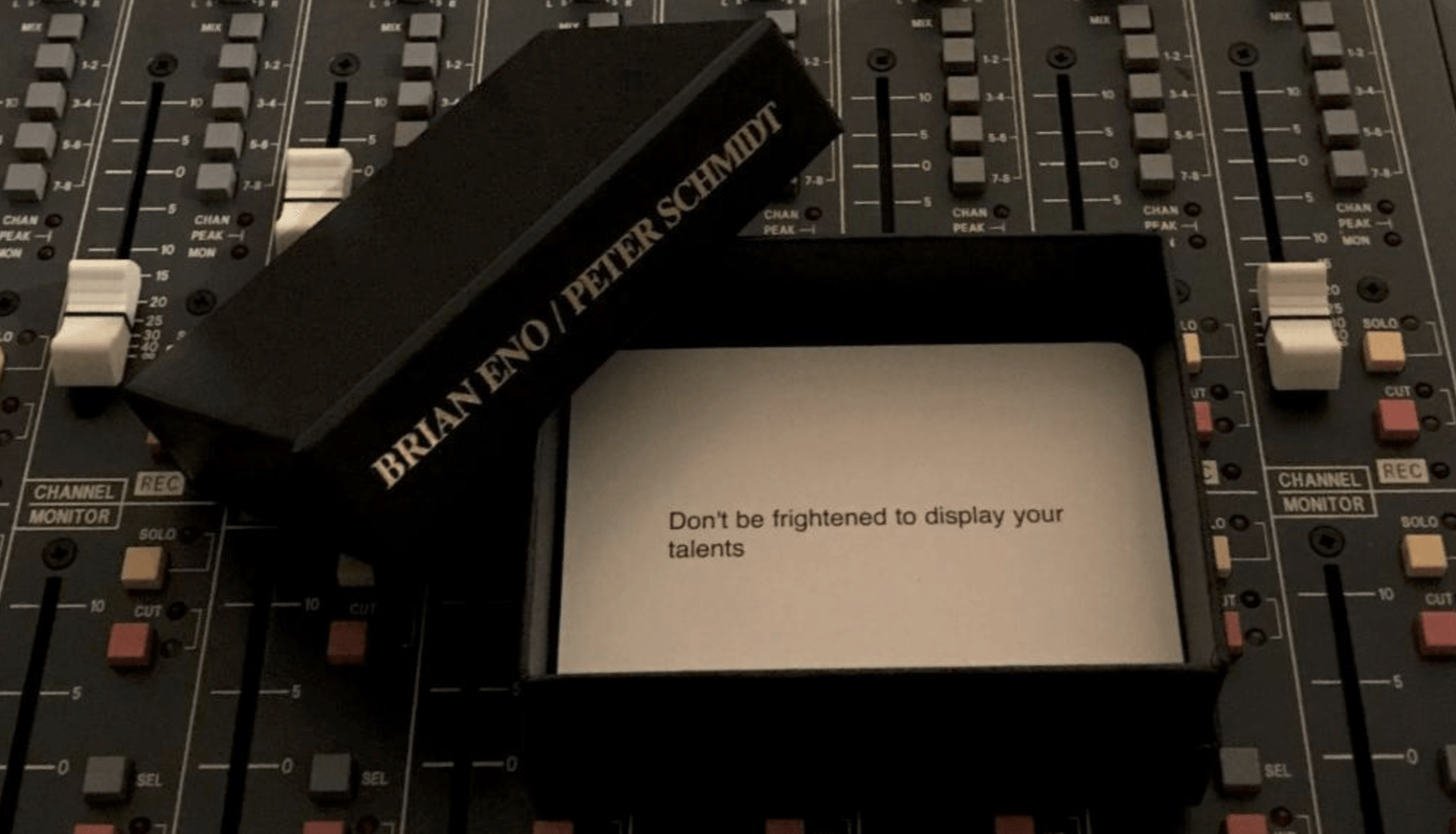
Image: Brian Eno's, Oblique Strategies. https://www.enoshop.co.uk/product/oblique-strategies.html
What could a diagram be?
‘We live in the age of information. The world is an interconnected system where “everything” appears to be cross-linked with everything. With the vast quantity of complex information that we need to understand, rank and communicate, information design becomes fundamental. Therefore, more and more information is being visualised extending the application of diagrams far beyond its classical field of use’ (Klanten, 2009).
A diagrams is a simplified drawing showing the appearance, structure, or workings of something; a schematic representation, yet it can take on lots of forms. For example, a list, like that of ‘How to work better’ by Peter Fischli and David Weiss (image 1 above). It’s a simple list of 10 things to do to work better, but its overview could be applied to any occupation or discipline. This reminded me of Anthony Burrill’s ‘Work Hard and Be Nice to People’, which has become a motivational poster that has turned up in many a creatives studio and beyond. He has even setup an Instagram account so people can submit their photos of his artwork situated in different contexts around the world. Here’s mine (image 2), a slightly different variation on the well-known larger woodblock print, along with my motivational peg letter board where I change the quote every so often to keep me moving! (image 2).
Mark Lombardi's George W. Bush, Harken Energy and Jackson Stevens, ca. 1979-90, 1999 (image 4) demonstrates how a diagram can not only be an orderly representation of data, but it can be beautiful too.
Challenge - What are your skills? What are the gaps?
- Write a list of your current skills and a separate list outlining the skills that you want to acquire. This can include ways of working, thinking or an area of knowledge you wish to develop.
- Create a ‘process model’ which summarises the skills you currently possess and the gaps you wish to fill.
- This piece of work could be a diagram, a 3D statement that clearly communicates a thought process relevant to you at this moment (how you deal with weaker skill gaps and how you maximise your talents), a statement, a model, a tool.
Inspiration & Development
Initial list of skills I possess and skills I would like to acquire. I then started to try and categorise them into bubbles that overlapped. This progressed to an idea of a butterfly and taking flight with the categorises overlapping within the wings.
Inspired by a walk with my dog, I often track my walks using the app Strava and then I remembered Jodie Silsby’s Portsmouth Vernacular map made from listened conversation recorded at each of the roads throughout Portsmouth (image2&3). My roads could be named after skills.
Other inspiration came from the initial concept of the Breathe campaign where roads had become networks of 'trees' taking over from those of nature (image 3). Here, I thought of the idea of branches on a possible tree of knowledge.
Image 1 shows my dog walk map, which is really a process map on happenings and how I overcome them to get to where I want to be. My mind wandering slightly from the brief.
Image 2 is a screenshot of my Strava app recording one of my dog walks. On inspecting the settings there is a Heatmap option to display all of my sports route history. This generated the idea of skills mapping further and how I could map skills I am proficient in, skills that need more practice and skills I would like to explore or acquire.
Image 3 is my new list split into three columns. Some I feel come between acquired and need for practice, as sometimes we do not use a skill for some time and it needs to be exercised to remain at a good standard or we can also forget how to do something over time.
Final Outcome
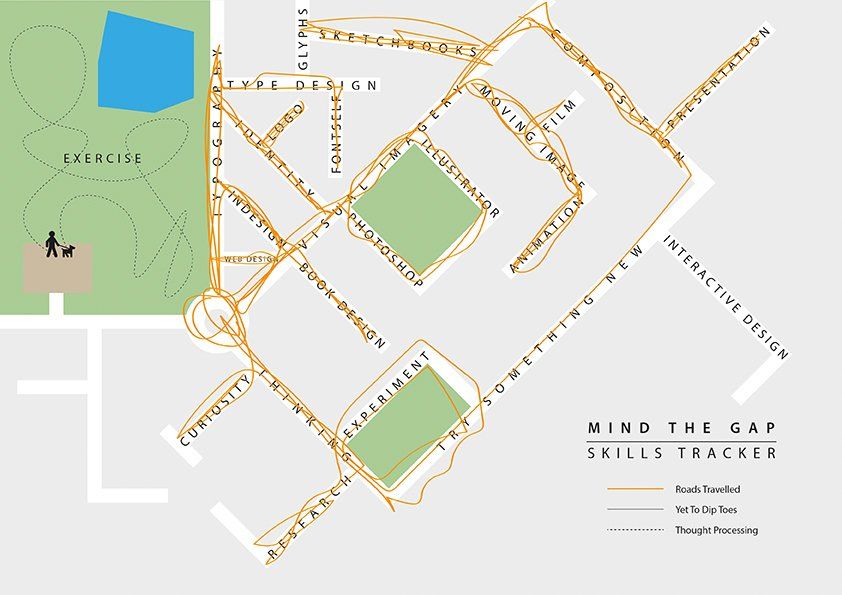
Like the Strava app the orange tracks represent where I have been and the skills I have learnt, and the blank roads are the skills gaps. The skills that I am more proficient in are more travelled and the ones less so could do with more work. I’ve also left roads unnamed for expansion. I realised in the map it looks like I have never been home and I am always walking the dog!

